Abstract
Diel patterns of dissolved free amino acid (DFAA) concentration and microheterotrophic utilization were examined in the spring and fall of 1981 in euphotic waters from the base of the mixed layer off the southern California coast. The average depths of the isotherms sampled were 19.2 m for spring and 9.0 m for fall. Total DFAA levels were generally higher in the spring than in the fall, 18 to 66 nM and 14 to 20 nM, respectively. Two daily concentration maxima and minima were observed for total DFAAs as well as for most individual DFAAs. Maxima were usually measured in the mid-dark period and in the early afternoon; minima were typically observed in early morning and late afternoon. Bacterial cell numbers reached maximal values near midnight in both seasons. These increases coincided with one of the total DFAA maxima. The second total DFAA maximum occurred in early to midafternoon, during the time of maximum photosynthetic carbon production and rapid dissolved amino acid utilization. Microbial metabolism (incorporation plus respiration) of selected 3H-amino acids was 2.7 to 4.1 times greater during the daylight hours. DFAA turnover times, based on these metabolic measurements, ranged between 11 and 36 h for the amino acids tested, and rates were 1.7 to 3.7 times faster in the daylight hours than at night. DFAA distributions were related to primary production and chlorophyll a concentrations. Amino acids were estimated to represent 9 to 45% of the total phytoplankton exudate. Microheterotrophic utilization or production of total protein amino acids was estimated as 3.6 μg of C liter−1 day−1 in spring and 1.9 μg of C liter−1 day−1 in the fall. Assimilation efficiency for dissolved amino acids averaged 65% for marine microheterotrophs.
Full text
PDF
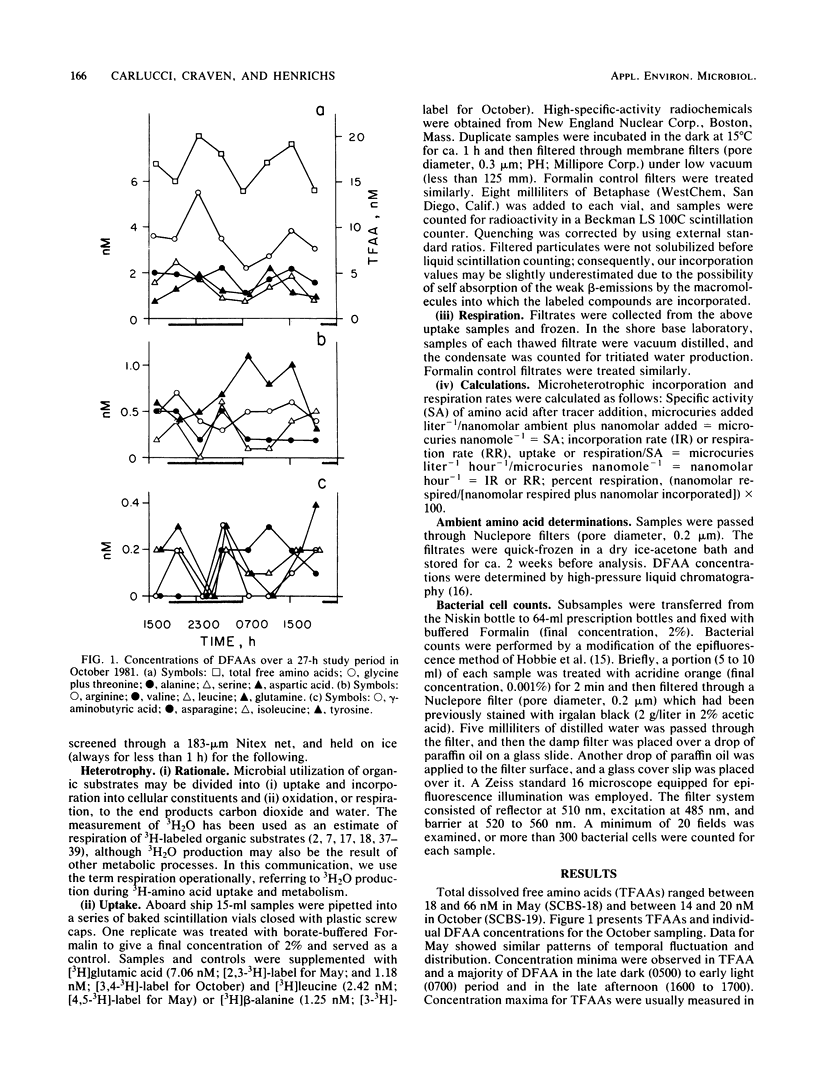
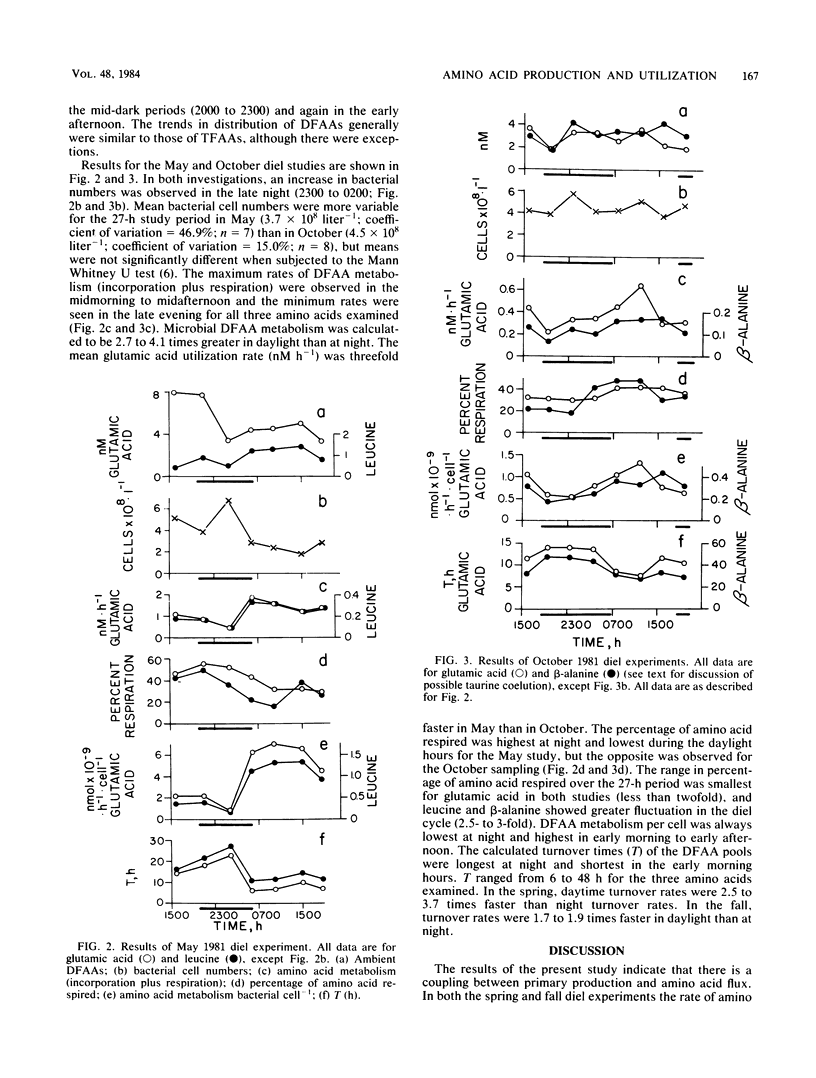
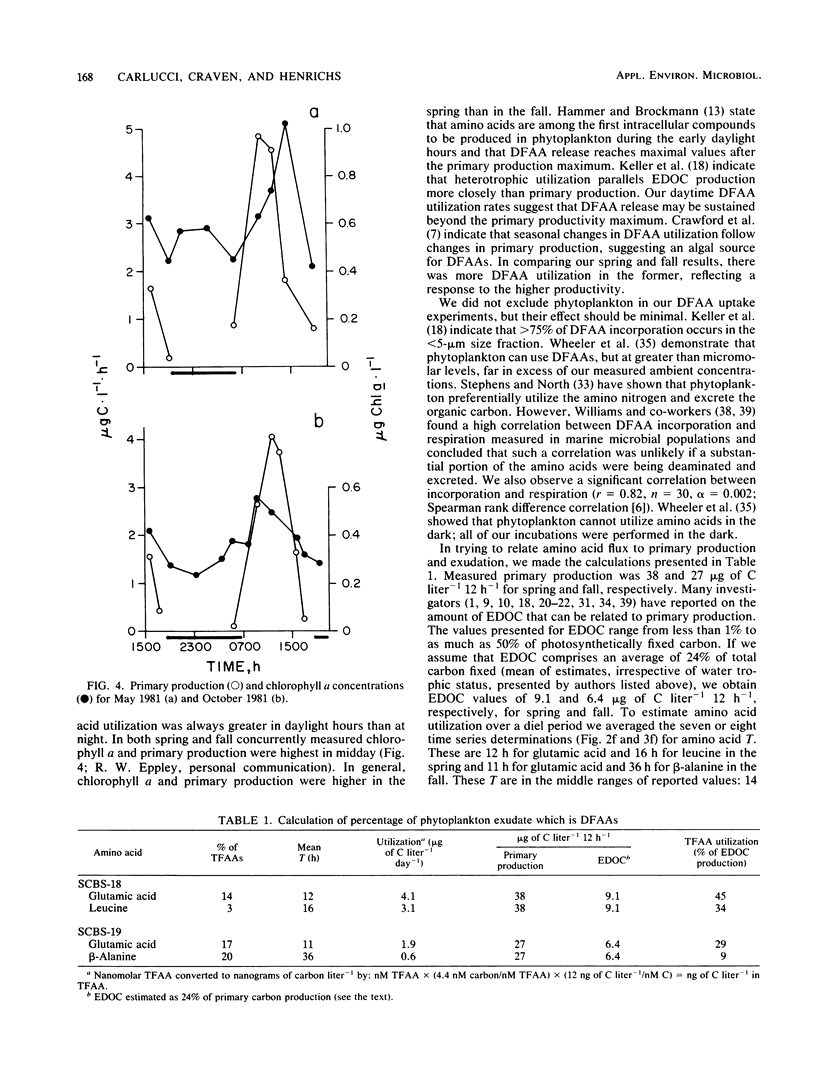
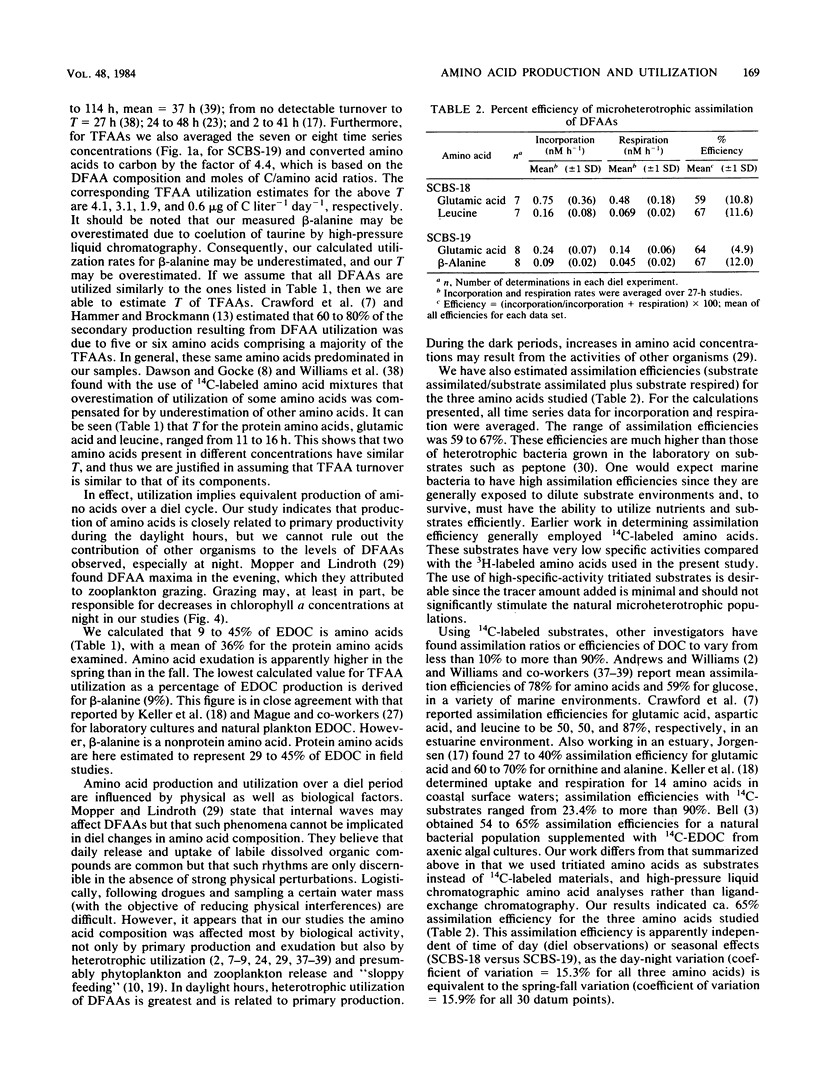
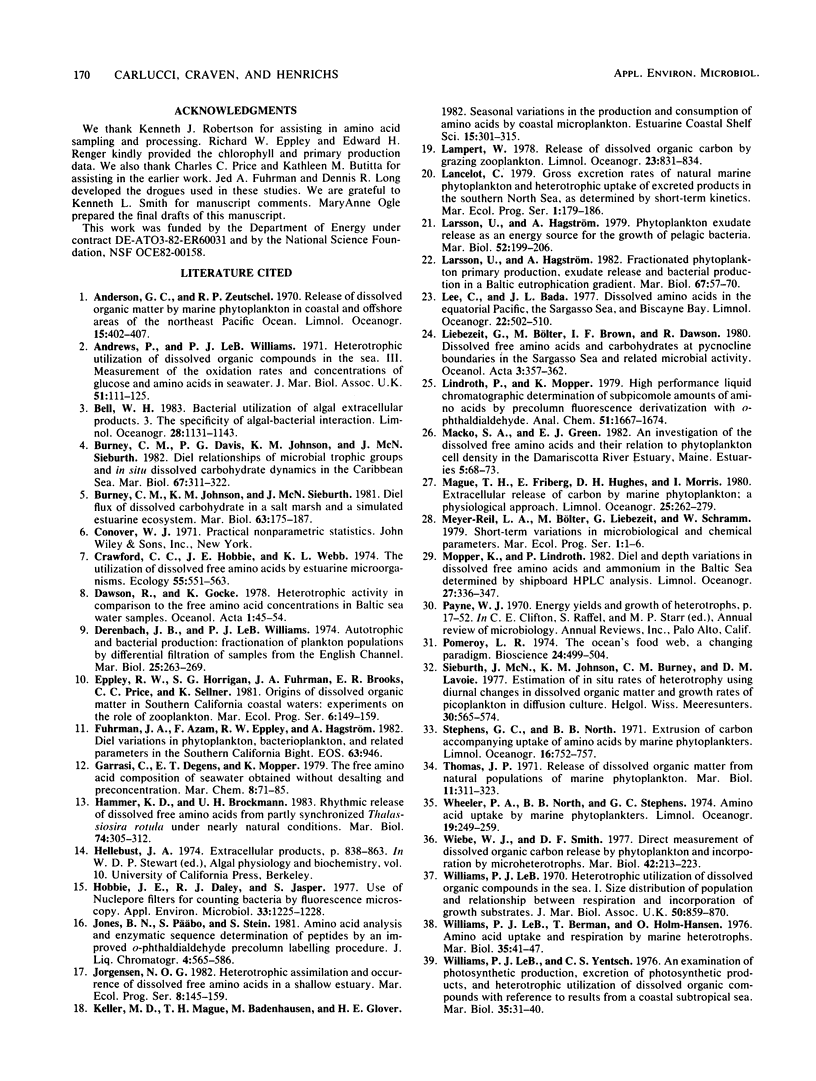
Selected References
These references are in PubMed. This may not be the complete list of references from this article.
- Hobbie J. E., Daley R. J., Jasper S. Use of nuclepore filters for counting bacteria by fluorescence microscopy. Appl Environ Microbiol. 1977 May;33(5):1225–1228. doi: 10.1128/aem.33.5.1225-1228.1977. [DOI] [PMC free article] [PubMed] [Google Scholar]
- Payne W. J. Energy yields and growth of heterotrophs. Annu Rev Microbiol. 1970;24:17–52. doi: 10.1146/annurev.mi.24.100170.000313. [DOI] [PubMed] [Google Scholar]


